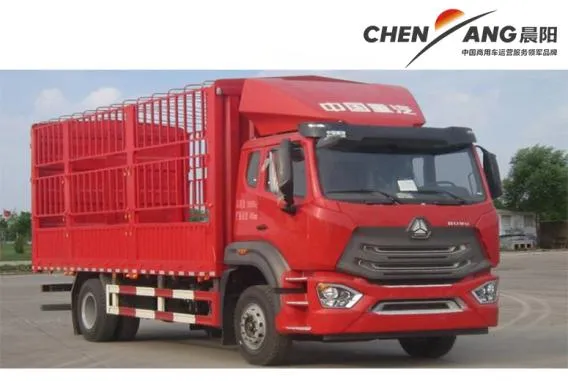Engine assembly process and best practices for optimal performance and reliability
Understanding Engine Assembly A Comprehensive Overview
Engine assembly is a critical process in the automotive and aerospace industries, crucial to ensuring that engines operate efficiently and effectively. An engine serves as the heart of a vehicle, and its assembly requires precision, expertise, and the integration of numerous components. This article will explore the various aspects of engine assembly, including its importance, the general steps involved, common challenges, and advancements in technology.
Importance of Engine Assembly
The engine is responsible for converting fuel into mechanical energy, which powers vehicles. Proper engine assembly is vital because any mistakes can lead to poor performance, increased fuel consumption, and potential engine failure. An improperly assembled engine can also pose safety risks, cause environmental pollution, and lead to costly repairs. Therefore, manufacturers invest heavily in quality control and skilled labor to ensure that engines are assembled correctly.
Key Components of Engine Assembly
An engine is made up of various components that must be assembled with precision. These components include
1. Cylinder Block The core structure of the engine, housing the cylinders where fuel and air combustion occurs. 2. Pistons Moving components within the cylinders that convert the energy from combustion into mechanical power. 3. Crankshaft A rotating shaft that translates the linear motion of the pistons into rotational motion essential for vehicle movement. 4. Cylinder Head Covers the cylinder block and contains the intake and exhaust valves, as well as the combustion chambers. 5. Valvetrain Comprised of various elements such as camshafts, valves, and springs, which control air intake and exhaust.
These components must be meticulously assembled, often with the help of specialized tools and equipment to ensure proper fit and alignment.
Steps in Engine Assembly
The process of engine assembly typically follows several key steps
1. Preparation of Components Before assembly begins, all parts are cleaned, inspected for defects, and prepared for installation. This may involve machining process adjustments, replacement of worn parts, and ensuring that all components meet specifications.
2. Assembly of the Short Block The short block, which includes the cylinder block, crankshaft, and pistons, is usually assembled first. This stage includes installing bearings, connecting rods, and the oil pump.
engine assembly

3. Attaching the Cylinder Head Once the short block is complete, the cylinder head is attached. During this stage, gaskets are installed to prevent leaks, and the head bolts are tightened to specific torque specifications.
4. Installation of the Valvetrain The next step involves attaching the valvetrain components. This includes integrating the camshaft and adjusting the timing to ensure the valves open and close at the right intervals.
5. Adding Accessories and Systems After the main components are in place, essential systems, including cooling, fuel delivery, and exhaust systems, are connected. These systems are vital for lubricating the engine and managing heat and emissions.
6. Final Inspection Once assembly is complete, a thorough inspection is conducted. This may involve pressure testing, leak tests, and diagnostics to ensure that everything operates as expected.
7. Testing Finally, the completed engine undergoes a series of tests, often in a dynamometer, to assess its performance and efficiency before installation in a vehicle.
Challenges in Engine Assembly
Engine assembly presents unique challenges, including the need for precision engineering, the management of tolerances within micro-millimeter ranges, and the incorporation of advanced technologies like turbocharging and hybrid systems. Additionally, teams must work efficiently to minimize production downtime while delivering high-quality engines.
Technological Advancements
Recent technological advancements have revolutionized engine assembly processes. Automation and robotics are becoming increasingly prevalent, allowing for higher production rates and improved precision. Additionally, computer-aided design (CAD) and computer-aided manufacturing (CAM) help streamline designs and assembly processes, reducing errors and enhancing efficiency.
Furthermore, the integration of additive manufacturing (3D printing) has opened new avenues for creating complex components quickly and efficiently. As a result, manufacturers can produce lighter and more efficient engine components, which contribute to overall vehicle performance and fuel efficiency.
Conclusion
Engine assembly is a multifaceted process that plays a crucial role in the performance of automobile and aerospace engines. Understanding the intricate components, steps involved, and challenges faced in this process is essential for ensuring the reliability and efficiency of engines. As technology continues to evolve, the future of engine assembly holds the promise of even greater innovations, further advancing the capabilities of modern engines.
-
SINOTRUK HOWO 84 Electric Dump Truck for Eco-Friendly Heavy HaulingNewsJul.26,2025
-
The Fast 16-Gear Manual Transmission Assembly for Heavy TrucksNewsJul.25,2025
-
Mercedes Benz Actros 1848 42 Tractor Truck for Sale - Reliable PerformanceNewsJul.24,2025
-
High-Quality Water Pump Assembly for Sinotruk Trucks – Durable & ReliableNewsJul.23,2025
-
Premium Truck Engine Antifreeze Coolant Fluid for Heavy Duty VehiclesNewsJul.22,2025
-
FOTON View G7 Mini Bus: Affordable & Spacious TransportNewsJul.22,2025
Popular products

























